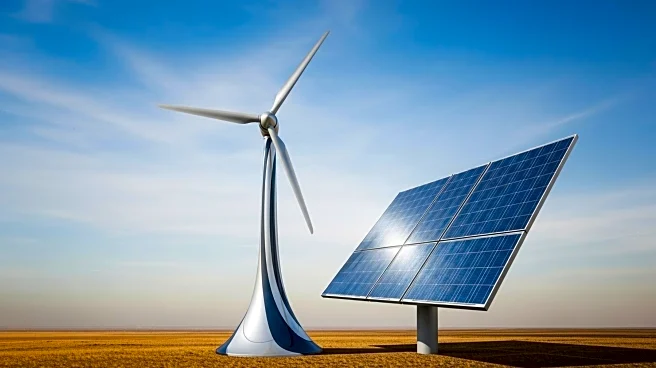What is the story about?
What's Happening?
Haikong Sanxin New Energy Materials, a Chinese solar glass producer, has announced plans to file for bankruptcy due to significant financial losses. The company reported a net loss of 194.5 million yuan ($27.3 million) for the first half of 2025 and is burdened with 659 million yuan in debt. Production was halted at the end of September to prevent further losses, following the shutdown of a 550 metric ton kiln and five processing lines in July. Despite keeping two lines operational to fulfill commitments to key customers, the company has struggled with falling prices and high production costs. The solar industry in China, which accounts for approximately 80% of global production, is facing challenges as production capacity has nearly doubled global demand, leading to unsustainable price levels.
Why It's Important?
The bankruptcy filing of Haikong Sanxin highlights the broader financial difficulties within China's solar industry, which is a major player in the global market. The oversupply and resulting price wars have led to significant losses for companies, prompting government intervention to curb excessive competition. This situation could impact global solar supply chains and pricing, affecting U.S. solar companies that rely on Chinese imports. The financial instability in China's solar sector may also influence global renewable energy strategies and investments, as stakeholders reassess the viability of solar projects amid fluctuating market conditions.
What's Next?
The Chinese government has called for an end to 'involution,' or excessive competition, which may lead to regulatory changes aimed at stabilizing the solar market. Companies within the industry might need to consolidate or innovate to survive the current economic climate. The bankruptcy of Haikong Sanxin could prompt other solar producers to reevaluate their operations and financial strategies. International stakeholders, including U.S. companies, will likely monitor these developments closely, as they could affect global solar supply and pricing.
Beyond the Headlines
The financial struggles of Haikong Sanxin and the broader solar industry in China may have long-term implications for global renewable energy policies. As countries strive to meet climate goals, the reliability and affordability of solar energy become critical factors. The situation underscores the need for balanced production and demand strategies to ensure sustainable growth in the renewable energy sector.
AI Generated Content
Do you find this article useful?













